Neil Chesanow
Senior Editor
Medscape Business of Medicine

Loading...
Neil Chesanow | July 29, 2015

How confident are today's residents about developing the clinical skills required by their specialties? How challenging is it to achieve work-life balance? How concerned are residents about their medical school debt? After residency, do they see themselves as practice owners? Partners? Employees? Are they open to seeing some patients via videoconferencing or some other medium of telehealth? For answers to these and other intriguing questions, Medscape surveyed more than 1700 residents in 24 specialties from May 14 through June 22, 2015. All participants were enrolled in a US medical residency program.
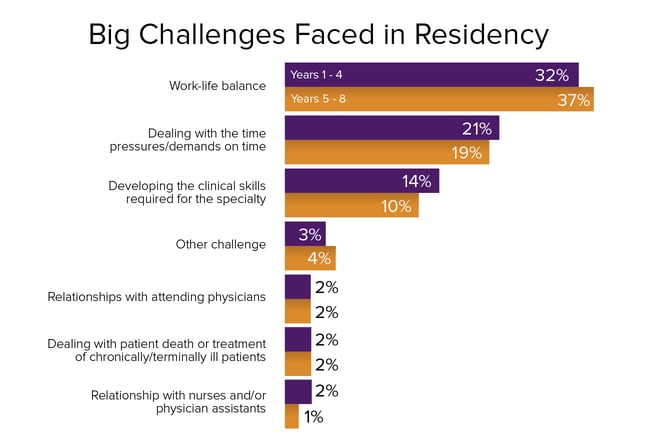
For nearly a third (32%) of residents in the first 4 years of residency and 37% in years 5-8 of residency, finding a work-life balance was a challenge. Yet only about 1 in 5 residents had difficulties dealing with the time pressures of their jobs, and only 14% in the first 4 years of residency had problems developing the clinical skills required for their specialties. Their relationships with attending physicians, nurses, and physician assistants were not problematic (only 2% of respondents noted them as challenging). Only 2% of residents said they were challenged by the death of a patient or treatment of chronically or terminally ill patients.

When residents were asked to rank which statements accurately reflected their medical lives, a clear majority (85%) agreed or strongly agreed that they were developing the necessary clinical skills to practice their specialty. The second-largest group (80%) had a good idea of what they wanted to do after residency. Concern about medical school debt and fear of failure or of making a serious mistake tied for third; 58% of residents agreed or strongly agreed with each. Having a difficult time with the death of a patient again ranked last, with only 2% of residents strongly agreeing that it created problems for them, although 16% did say they had some problem with it.

In most cases, male residents were slightly more confident than their female colleagues about becoming a good doctor, with 67% of men sometimes having doubts vs 71% of women, 7% of men having doubts almost all the time vs 11% of women, and 2% of men having chronic doubts vs 3% of women. The greatest variation was in residents who were completely confident about becoming a good doctor. Twenty-four percent of male respondents and 15% of female respondents told us that they never had doubts.
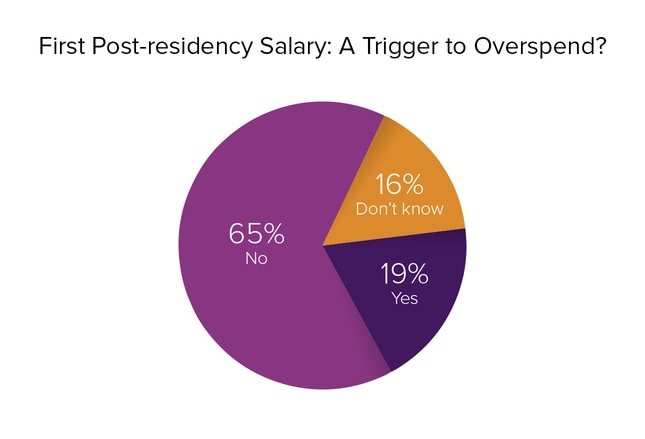
In 2015, the average resident salary was a modest $55,400, according to Part 1 of Medscape's Residents Salary & Debt Report. Even primary care residents, who are among the least well-paid doctors, can look forward to earning $195,000, the average salary for practicing primary care physicians in Medscape's 2015 Physician Compensation Report. Anticipating that day, are residents planning to cut loose and overspend? The majority (65%), perhaps remembering their heavy debt load, said no. While nearly 20% do plan to overspend, they may include the fortunate 22% of residents who have no debt, according to Part 1 of our 2015 Residents Report.
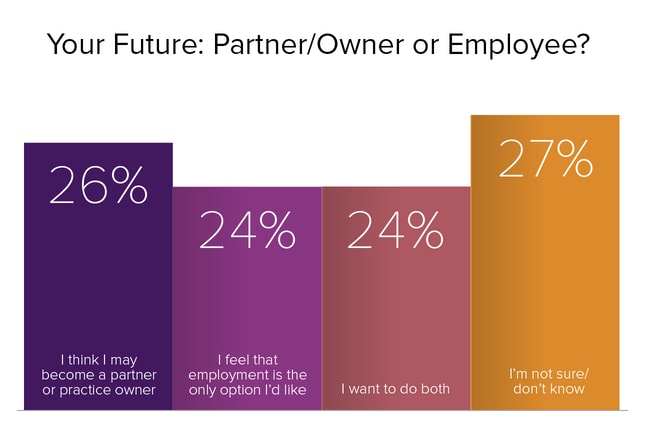
Most residents (80%) told us that they had a good idea of what they wanted to do after residency. But what about their long-term goals? Did they see themselves one day being a partner in a practice or owning their own, being an employee with regular hours—what most doctors currently do—or perhaps doing both at different times in their careers? The responses turned out to be a virtual four-way tie, with 26% of our respondents opting for partner/owner, 24% preferring employment, 24% thinking they might want to do both, and 27% still not sure.
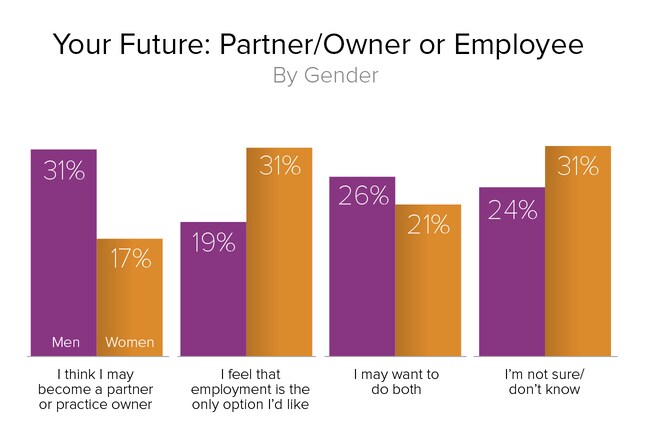
While our average resident responses about future goals were pretty evenly divided, when future goals were broken out by gender, there were significant differences. While nearly one third (31%) of male residents envisioned themselves as one day being a partner in or owner of a medical practice, only 17% of female residents had the same aspiration. Conversely, a significantly higher percentage of female residents (31% vs 19% of males) saw employment as their preferred career option. Somewhat more male than female residents (26% vs 21%) could see themselves as both employees and practice partners/owners at different stages of their careers. A higher percentage of female than male residents (31% vs 24%) were uncertain about their future goals.
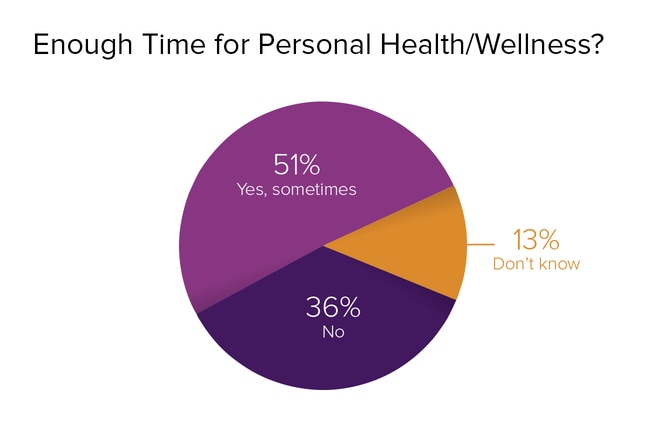
Only about one third of residents reported that work-life balance was a challenge. Yet over one third (36%) said they did not spend sufficient time on their personal health/wellness and on burnout relief, and over half (51%) indicated that sometimes they did and sometimes they didn't. Only 13% of residents reported that personal health and wellness received adequate attention on a regular basis.
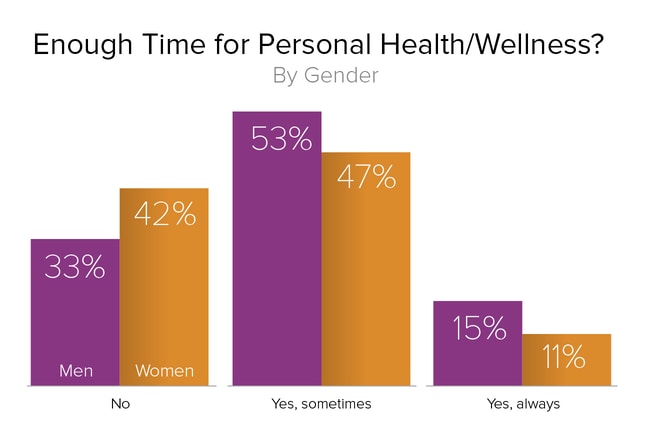
In Medscape's 2015 Physician Lifestyle Report, burnout was a serious problem in all 26 specialties surveyed, with too many bureaucratic tasks and too many hours spent at work rated first and second as the major causes of burnout. Moreover, female practicing physicians were more burned out than their male colleagues (51% vs 43%). Our latest Residents Report echoed these findings. When resident responses were broken out by gender, in each case, female residents paid less attention to their health and wellness than did their male counterparts: 33% of men vs 42% of women didn't spend sufficient time taking care of themselves; 53% of men vs 47% of women did only some of the time; and only 15% of men vs 11% of women always did.

Surveys show that many patients like the convenience of being able to consult with a doctor remotely via email, telephone, or videoconferencing without having to leave the house. However, many practicing physicians aren't keen on the idea of no-touch patient visits. But how do today's residents, for whom the use of technology in medicine is second nature, feel about seeing patients remotely via telehealth? The majority, our 2015 report found, have no problem with it. Fully 70% of our respondents said they would videoconference with a patient, 63% would consult with a patient over the phone, and 56% would confer with a patient via email.
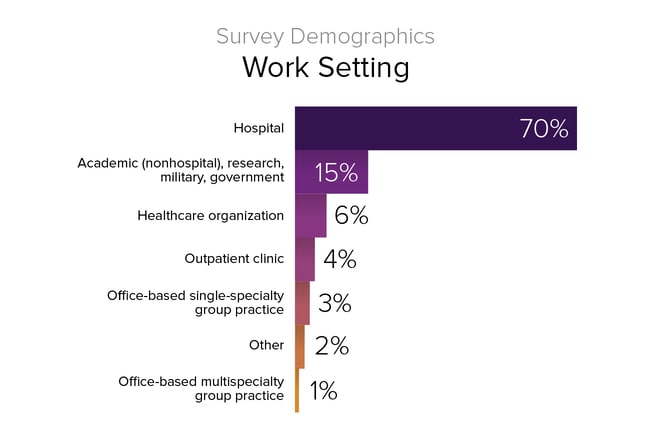
Most residents (70%) work in hospital settings. Although serving in the military or an underserved area can reduce medical school debt, it's an option that few residents choose. Similarly, graduate medical education funding is available for community-based teaching sites, which is intended to produce more primary care physicians. But with more than one half of primary care residents looking to switch to more lucrative specialties, this opportunity currently has few takers.
 Previous
Next
Previous
Next 
| 0 | of | 00 |
